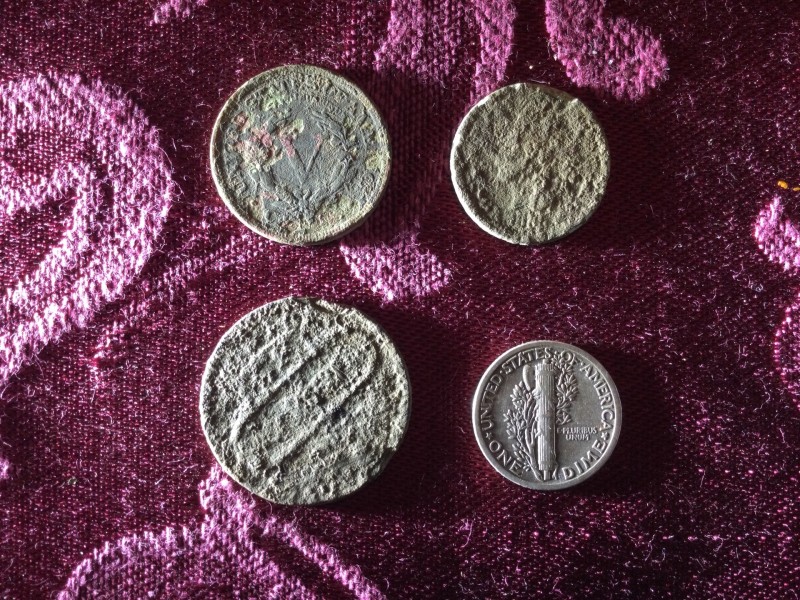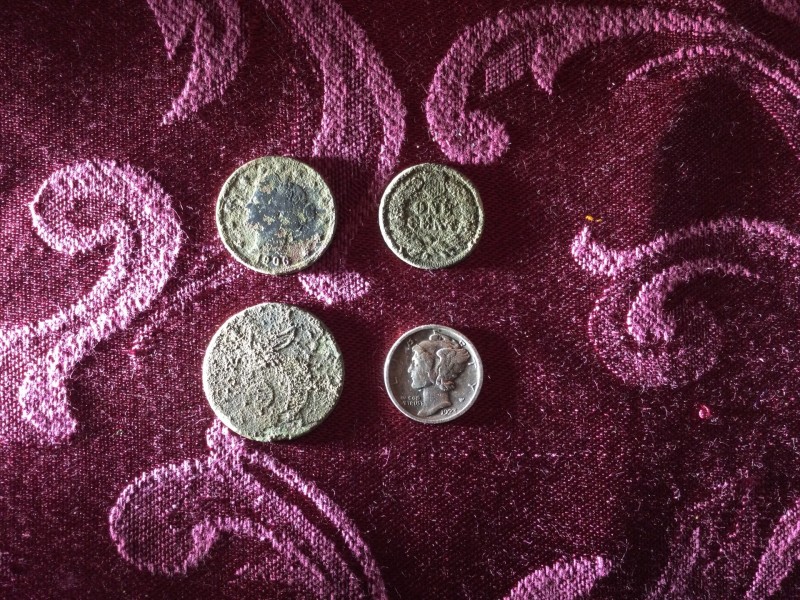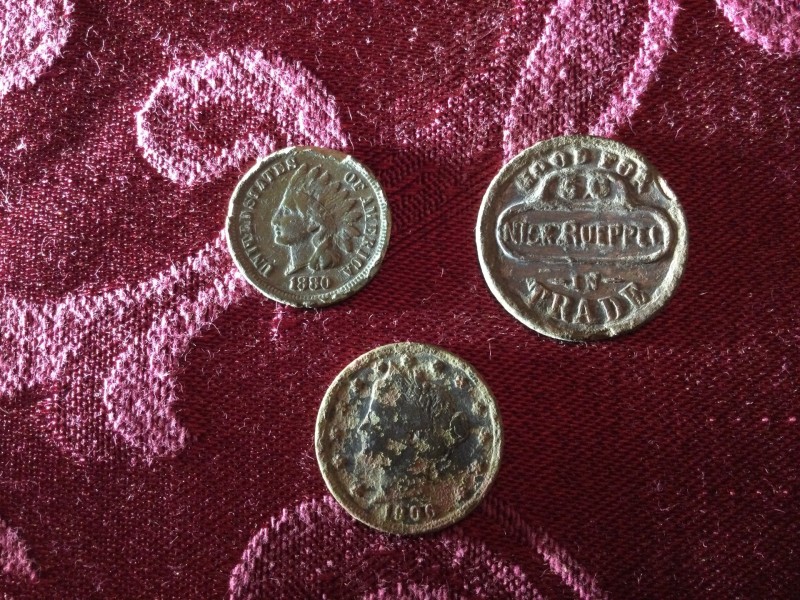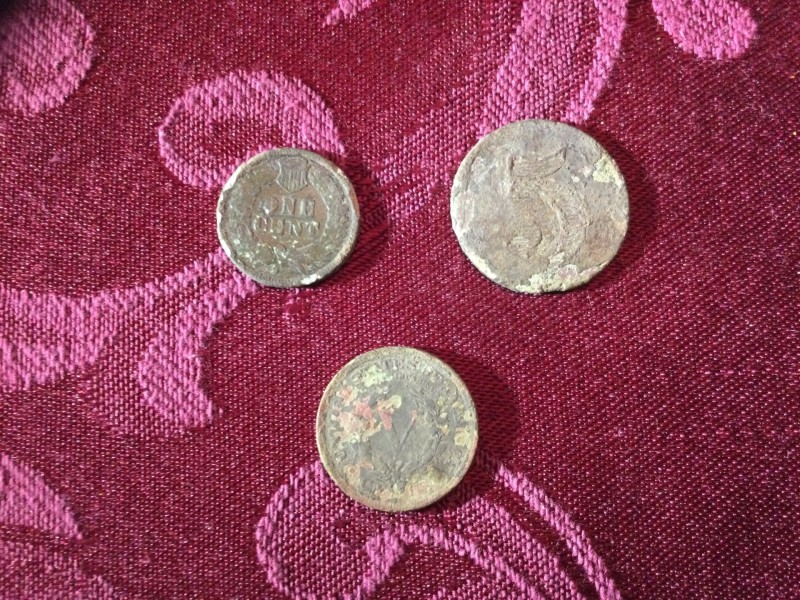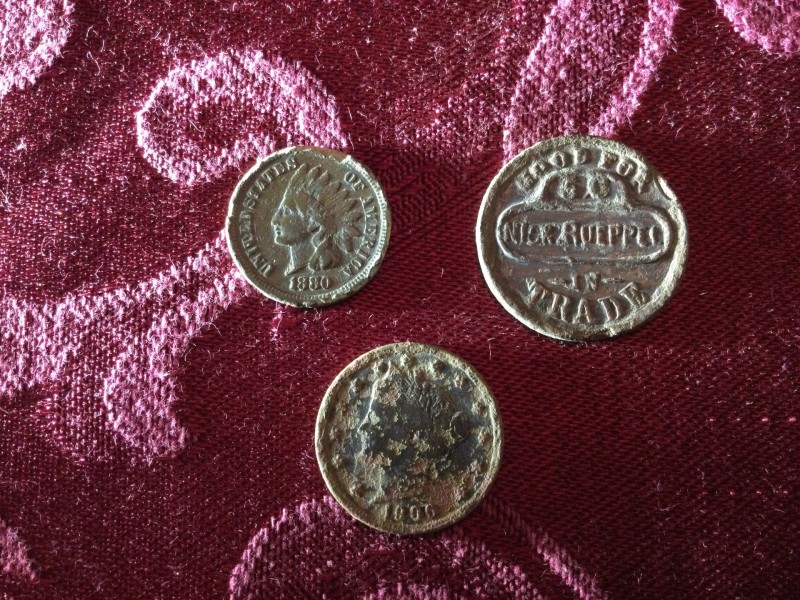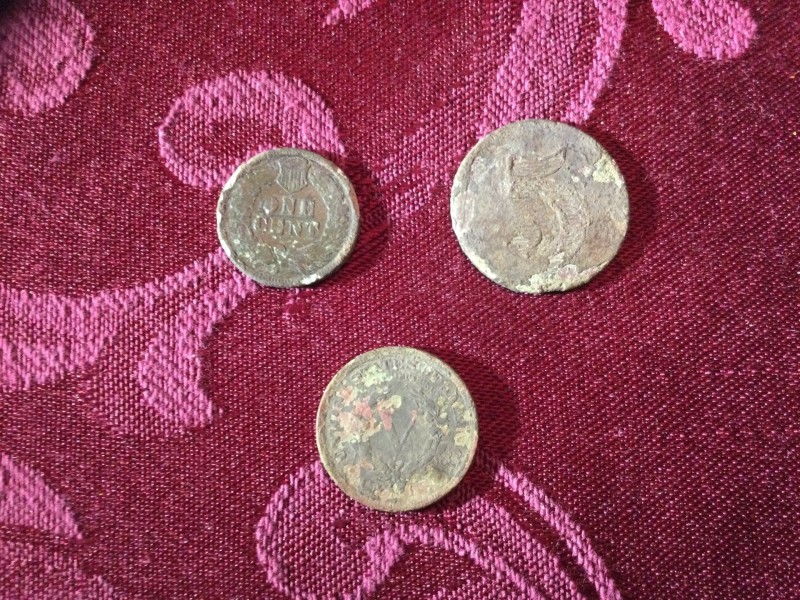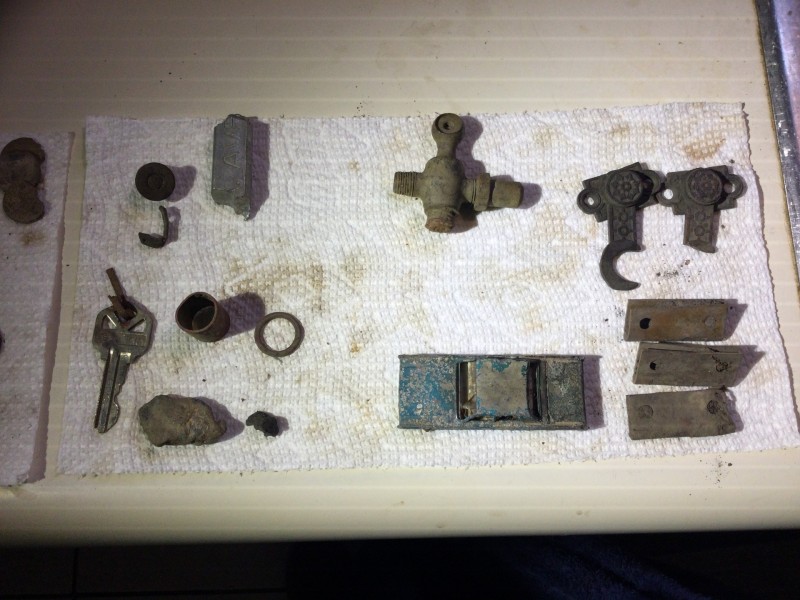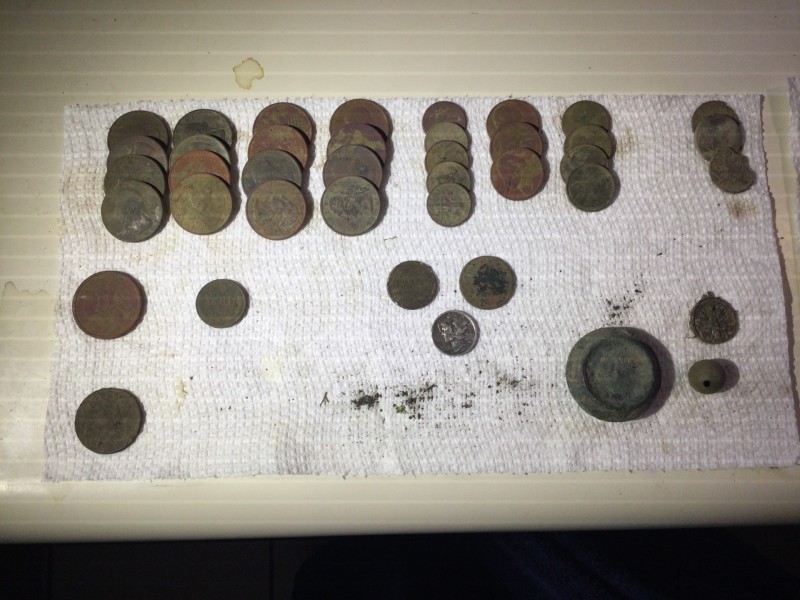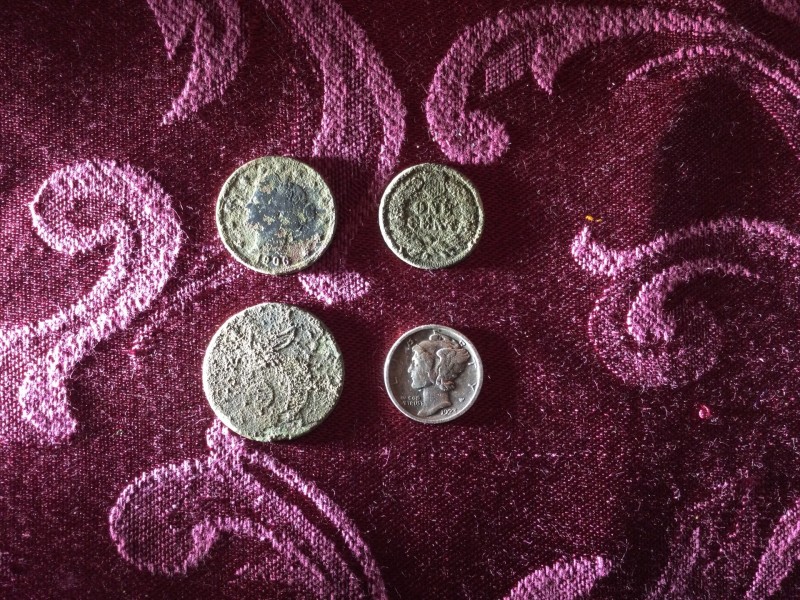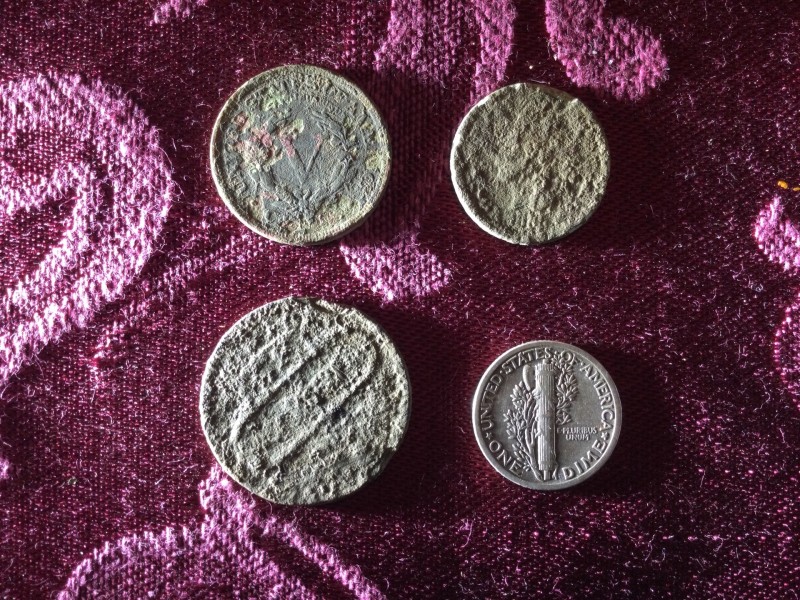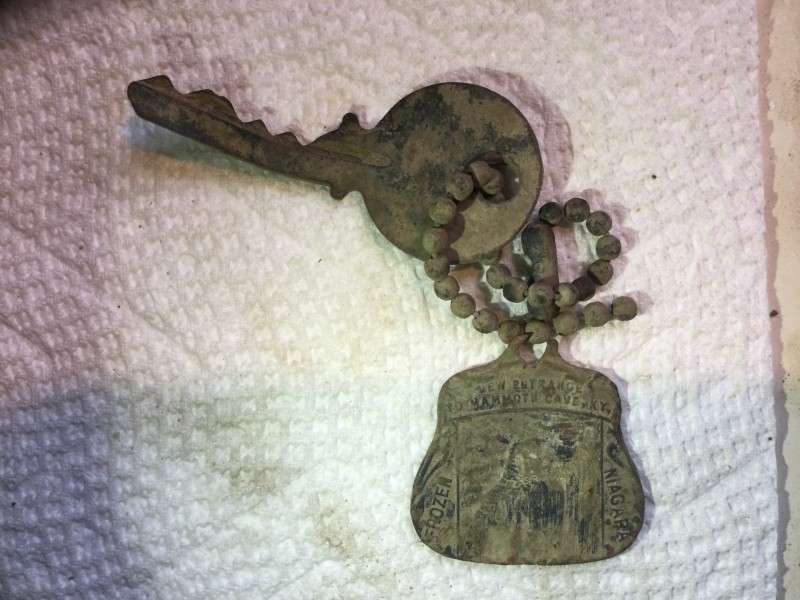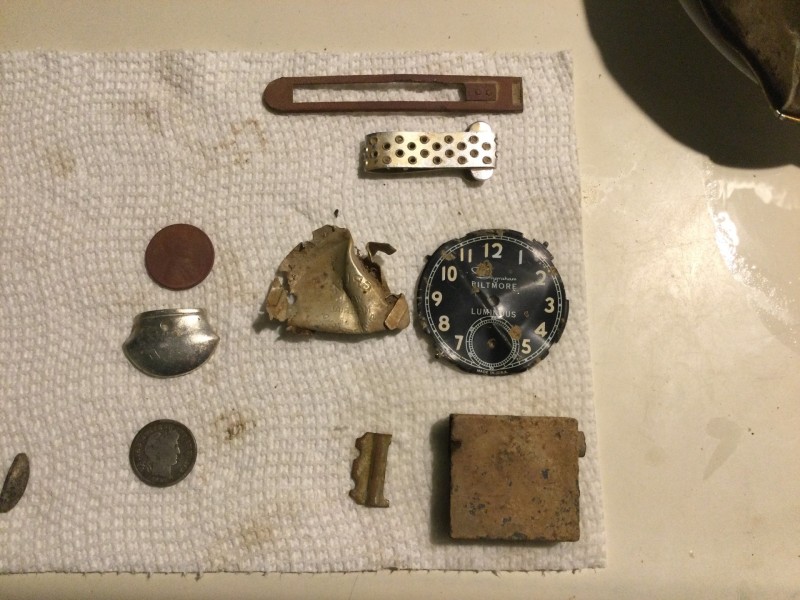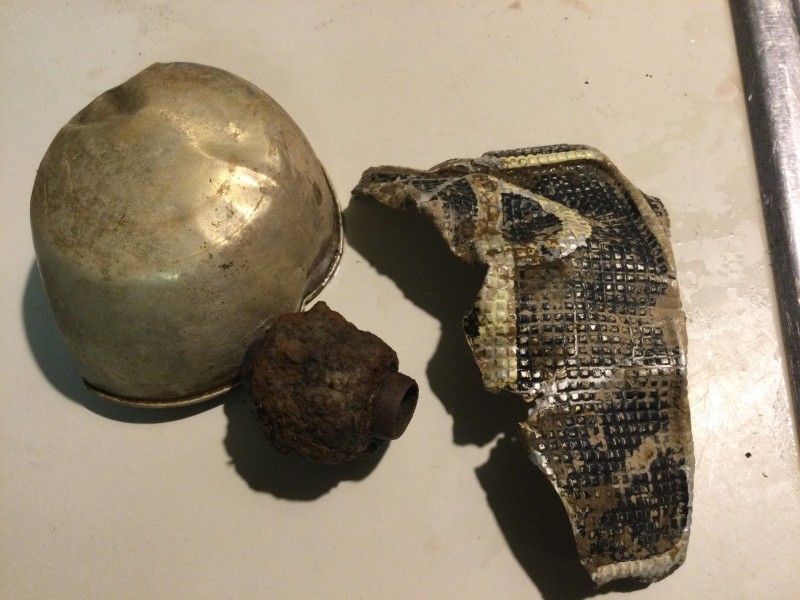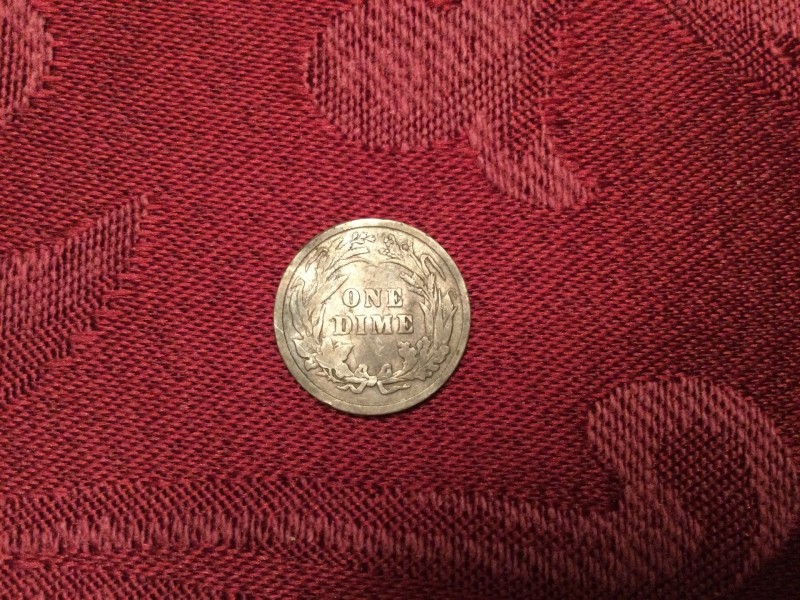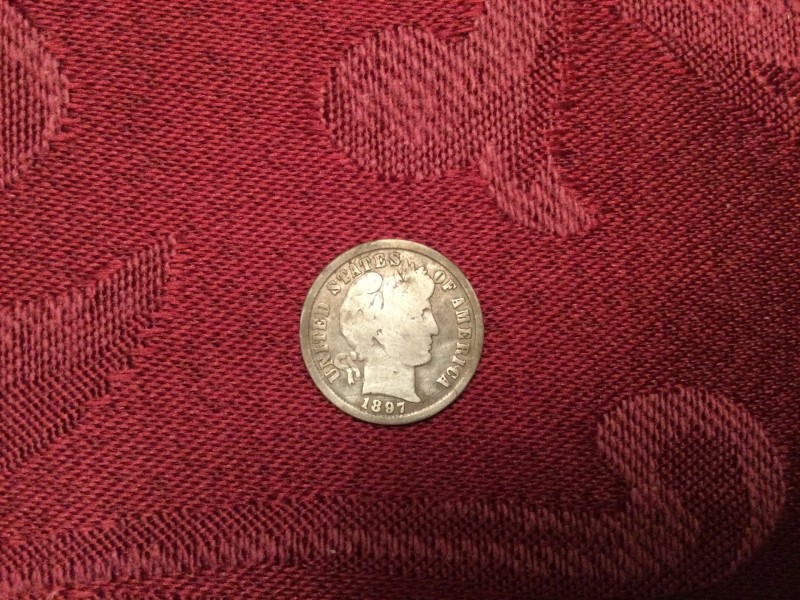-
Posts
330 -
Joined
-
Last visited
Content Type
Forums
Detector Prospector Home
Detector Database
Downloads
Everything posted by Geologyhound
-
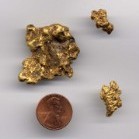
A Question About Sweeping Technique On Fields
Geologyhound replied to fogrider's topic in Metal Detecting For Coins & Relics
I will frequently use such a sweeping technique when scouting. My specific intent here is to find old buildings or potential hotspots without spending a ton of time. If I find something good, then I will slow down and grid that area. Sometimes I may continue scouting if I know I can come back this location later. -
I know cleaning/not cleaning and method of cleaning may be controversial. I do not post this with the intention of discussing whether or not to clean, nor the merits of any particular method. I simply wish to show some results. I recently found some old coins and a token. The Indian head penny was so badly crusted that some faint relief was visible where the date should be. The head was barely visible. The token had the number five visible on one side and nothing was legible on the other side. As such, I considered them essentially worthless unless more details could be seen. For this reason, I obtained a set of the Andre’s cleaning crayons from an Internet vendor. I got the set with five tools – one white fiberglass, two black (hard and soft), one scraper, one steel wool. My basic take on this set is the white is coarse, the blacks are medium and fine, and the steel wool is clean up. I did not use the scraper. I probably spent at least two hours on the three items I cleaned. Before and after pictures are attached. The mercury dime was not cleaned at all, I just don’t have any other before pictures. I didn’t really do much with the V nickel other than clean up around the stars. However, I think the difference on the Indian head penny and the token is night and day. Not only is the date clearly visible on the penny, but so is liberty on the headband. The token is now clearly identifiable. My previous oldest coin was 1882. So, I am especially pleased that this “new“ penny is now my oldest coin! In hindsight, I think my biggest mistake was trying to clean them up too much right after I got home. Even with a soft bristle toothbrush, I lost part of the rim by scrubbing too hard. In the future, I think I may gently remove what dirt is loose and let the rest dry and harden before attempting to clean. I can post more about how I proceeded if anyone is interested.
-
Given the large variety of tokens historically minted, identifying an old token can sometimes be a nearly impossible task. As such, I thought I would start a thread where people can post information on various regional, local, or state references for token identification. I will start off with one for Ohio - Ohio Merchant Tokens by Gaylor Lipscomb, copyright 1986. A newer version is available. A couple libraries in the state have one available for library loan, so you can check it out at your local library. This book focuses on tokens from the 1870s until the print date, but mostly 1890-1940. The introduction states certain tokens are not included in this book, including: 1. transportation tokens cataloged by Coffee – published by the AVA 2. parking tokens - Feisel 3. Civil War tokens - Fuld, Published by the Civil War token society 4. modern food stamp tokens
-
Yes, this was all with the 11 x 13. I just received a set of the cleaning “crayons”, and experimented with a couple of wheat pennies before tackling these. I think I’ll have to make a separate thread for cleaning, but I wanted to post the results here so you can see the before and after. These are the same coins/token which I originally posted. Now that I can see the date, the 1880 Indianhead penny is my oldest coin ever! The token unfortunately does not show up in the Ohio Merchant Tokens book by Gaylor Lipscomb.
-
Went out for an afternoon hunt, and dug what I thought was a quarter as light was fading. When I started washing my finds, one “quarter“ was not like the others. It was a little larger and had a large number five on one side. There is writing on the other side but I can’t make out what. It looks like an old token. I have a set of the Andre’s pencils due to arrive later this week. I plan to practice on a couple wheat pennies before moving on to this. So, when I had another afternoon available, I headed back to the same site. I got sidetracked digging quarters (and a Sacajawea dollar – my first) at another portion of the site. For some reason, quarters seem to be the highest proportion of coins out here. I broke loose from the quarter area and headed back to where I found the token - again as light was starting to go. Right away, I hit a nickel signal. This was only an inch or two down. With the dirt, I thought I had another token, as it was obviously not a Jefferson or a buffalo. So I pocketed it and moved on. A few feet away I hit a low 80s signal with my D2, and about 8 inches down I found an Indian head penny. Again, I couldn’t see the date, so I pocketed it. Within about 10 feet I hit a nice high tone in the dime/copper penny range. I was very pleased to see a fairly clean 1923 mercury dime (about 7 inches down). When I started washing the dirt off the “nickel sized token“ at home I was shocked when I saw 1906 appear, and realized I had a V nickel! That makes this my oldest nickel! I can make out 18 on the Indian head penny, with possibly a six following. If so, that would make this my oldest coin ever! My prior oldest coin was an 1882 Indianhead penny. The 1923 mercury is the cleanest one I have found for that year/mint. So, it will take a place in my metal detecting coin album. I don’t know that I have ever found three 100+ year old coins in one day, let alone three different denominations. Any guesses where I will go when I next have a free afternoon? The matchbox car is number 31 - Lincoln Continental. I can’t make out a head stamp on the cartridge yet. The bar thing is melted on both ends, so I am guessing it is a type of bar solder. It is too heavy to be tin and does not weather like lead, so I’m wondering if it might be a silver solder, but it probably is a roofing solder. The brass latches and copper hinges came out of the same spot where I found two other identical brass latches in a prior trip. The small ball appears to be some sort of brass bead. The metal is a corroded Saint Francis of Assisi medallion. Based on the patina, I am thinking the brass knob is also well over 100 years old. It is 1 3/8 inches in diameter with a 7/8 inch diameter male threaded shank on the back. Given the age of the surrounding coins, I am guessing the original “5” token must also be over 100 years old. If I can clean it up and identify it in the state token book, I will post more information back here. Thanks for looking, and happy hunting!
-
Seateds of any sort are still on my bucket list. Nice find!
-
Do you know what minerals you found? Calcite? Adamite?
-

What Are These Beautiful Rocks?
Geologyhound replied to Cristy's topic in Rocks, Minerals, Gems & Geology
If you can flake off little flat sheets from the flat surfaced mineral, it is a mica group mineral - likely muscovite. -

How My Christmas Morning Went!
Geologyhound replied to SwiftSword's topic in Metal Detecting For Coins & Relics
Nice finds! Apropos for your moniker… Was that the stock fast 40 in full tones or did you make any additional modifications? -
I have been using the 11x13 exclusively for the time being. With the exception of this one site, I’ve been using it only at sites which I have already hunted with the 9 inch and/or my old White’s Spectrum XLT. Coming from White’s, I don’t mind the coil mount. The Spectrum coils were mounted in the rear just like XP’s, so I am used to it. Even with the 11x13, it still feels lighter than my old Spectrum. But, I do feel it more than the 9 inch. There have been a couple targets I am pretty sure I missed with the 9 inch, but by and large I seem to to have cleaned out most the decent targets with the 9 inch if I gridded it thoroughly. Now to be fair, a lot of the sites I hunted with the 9 inch are loaded with nails and/or the EMI will drive you nuts unless you drop the sensitivity. This is not exactly an ideal situation for a larger coil. On this subject, have you been at a site where the coil will act fine as long as you are sweeping, but as soon as you set down the coil to dig a target and the coil is no longer parallel to the ground, it starts sounding off like crazy? I figure that’s the EMI. At a couple of those sites, I have started leaving the coil in pinpoint mode when I set it down. That stops the constant beeping while I am trying to recover a target. As for iron falsing, I am still trying to figure out what different settings may say about iron saturated areas. I have been erring on the side of digging if I get better than 50% decent tones two ways on a target even if I lose the tone by rotating 45-90 degrees. Most of the time, after I recover enough nails or other iron bits out of the hole (generally around 6-9 inches), the iffy signal vanishes. I am open to advice here. Given these iron-rich sites I have been doublechecking, I have been trying to pinpoint by tone and not pinpoint mode. I have found wheats with the 9 inch which were sitting on top of large iron targets - impossible to pinpoint with pinpoint mode. Ultimately, I think my 9 inch is going to be very lonely. I know I have picked a couple more coins and brass items out of iron loaded sites and or EMI sites with the 11x13 which I hunted previously with the 9 inch. Even assuming I didn’t get the 9 inch over those targets previously, the 11x13 can find targets in those difficult sites. So it may become my default coil.
-
Same site, same coil, different day - a taco’d key, chain and fob. The fob reads New entrance to Mammoth Cave, KY. Frozen Niagara. The Frozen Niagara entrance was discovered in 1921. So, if the entrance is “new”, then the fob should date to the 1920s, but no idea when it was lost after that.
-

Last Hunt Of 2023, Not Bad
Geologyhound replied to F350Platinum's topic in Metal Detecting For Coins & Relics
Wow, that is about half the weight it should be for an IHP. It is closer to the right range for a worn wheat, but it doesn’t look quite right for that either. I zoomed in on the caliper shot and there appears to be a capital S and perhaps a small f following? Before the S there almost appears to be a number - 24? I wonder if it’s an old token, or perhaps an old state issued coin? With that much crust could be about anything. Please post more pics if you can raise any more details. -

Detecting In The Rain.. Glad I Did
Geologyhound replied to lostmypassworddude's topic in Metal Detecting For Coins & Relics
Love that dime! That would be my favorite, but I am partial to coins… -

Last Hunt Of 2023, Not Bad
Geologyhound replied to F350Platinum's topic in Metal Detecting For Coins & Relics
Any day with coins other than modern coins is a win in my book - silver especially so! Looks like you have a little buckle in your trash. What are the other discs? Shotgun shells? For your potential IHP, I think I can make out the letter “T” around the 1:30 position on your picture. It may be just worn, but the font looks wrong. The T for an IHP should have hanging edges on both sides. I also think I can make out part of the forehead, nose, chin line and left neck line (and possibly part of the right neckline and base of back of head) on your picture. I am guessing you could see part of this because you oriented it right side up in your picture. If that is the case, the T is in the wrong spot. Just out of curiosity, is it 19 mm in diameter? -
Somebody didn’t put their money where their mouth is…
-

Can You Identify This Strange Cone-shaped Rock?
Geologyhound replied to nofearluc's topic in Rocks, Minerals, Gems & Geology
Does any part of it attract a magnet? If so, is a particular area more magnetic than the rest of it? -
Alien abduction doesn’t count towards the naughty list, right? 😁 Now I need to either get a stock upper rod or a complete aftermarket shaft so I can have the second coil ready for hunting as a master setup for one of my kids.
-
This is a site I can definitely see with poison ivy come spring. I am looking forward to a couple more nice winter days with nothing else on the agenda!
-
Thanks! This is my second Barber dime. The first had historically been under salt water and had a black oxidation crust. So this is not only my oldest Barber, it is also my best Barber!
-
My family got me the 11 x 13 coil as a joint birthday/Christmas gift. Today was the first chance I’ve had to get out and use it. I started at a local beach just to experiment with the pinpointing in an easy to dig environment. I have heard the pinpointing on the 11 x 13 can be a little less precise. I didn’t find much at the beach other than a handful of lead weights, a few modern dimes, and a number of zinc pennies. But at least I was finding targets. I then moved on to an old school. This was pretty densely overgrown with no trace of the original structure, and I spent about half the time extricating myself from thorn bushes. However, my very first target after leaving the road was a clean signal in the copper penny range. Sure enough, about 4 inches down was a 1946D. I had had some doubts that I would find much here given the overgrowth. But, this was a proof of concept for me. About 15 minutes later I had another clean tone and about 3 inches down my pinpointer indicated the target was in a wad of clay I had a loosened. I separated the wad, and saw a shiny silver edge - an 1897 Barber dime! The only 1800s coins I have found outside of seeded hunts have been pennies. So this is my oldest dime! I also found the face plate for an Ingraham Biltmore luminous watch. I’m wondering if that’s radium…. In addition, I found the back plate for a Gruen Swiss watch. I’m not sure what the silvery “clip” like thing is. I’m thinking it did not used to be bent over like that. I was wondering if the other silvery item was an earring. My wife doesn’t think so. My son is wondering if it is the endcap for a pocket knife. There’s no hallmark on it, and it is lightweight, so I’m thinking it’s aluminum. in hindsight I probably should’ve used the 9 inch coil with all the underbrush. But all in all, I’d say it was a good first day for my 11 x 13!


